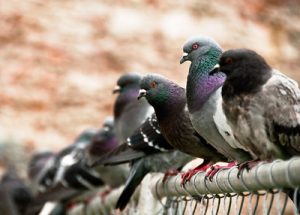
Hummingbirds – Origins, Species and Range
Experts believe that early species of hummingbird began to diverge from their “swift” ancestors more than 40 million years ago. Originating in Europe and Asia, they gradually migrated west to the Americas as they followed a food trail across the globe. The lineage of all modern-day species of hummingbird originates in South America which dates back some 22 million years.
The hummingbird is any one of more than 360 species of the avian Trochilidae family. The smallest family member is the bee hummingbird (Mellisuga helenae), which also happens to be the world’s tiniest bird. Found only in Cuba, the bird has a body length of less than 6 cm and can weigh as little as 2g. At the other end of the spectrum, the giant hummingbird can grow to some 20 cm in length and can weight up to 20 g.
The distribution of all species of hummingbirds is restricted to the Americas. However, most of these are only found in Central America, South America and the Caribbean. Some 12 species can be found in the USA and Canada, though less than half that number tend to breed in North America. Almost all hummingbird species have brilliant transcendent plumage, though females are less colourful than their male counterparts.
The Uniqueness of the Hummingbird

Photo credit: Flickr/Public Domain Mark 1.0
Here are twelve hummingbird facts that help make these tiny birds unique:
- Hummingbirds are the only birds that are able to fly forwards, backwards, sideways and upside-down.
- Some hummingbird species can fly at almost 40 mph in regular flight – quite a feat for a small bird! However, they can reach even faster speeds when performing courtship dives.
- The hummingbird’s wings can beat up to 80 times a second when hovering and even faster in a dive. Thus, they take their name from the sound their wings make when in flight.
- Despite their tiny stature, some hummingbird species embark on annual migration journeys of up to 3,000 miles.
- Unlike most bird species, hummingbirds migrate individually rather than in flocks
- Hummingbirds have a voracious appetite and can consume up to twice their own body weight in food daily. While they do eat small insects and spiders, the mainstay of their diet is nectar.
- Unlike most bird species, the male hummingbird plays no part in the upbringing of its offspring. Female hummingbirds are left to build the nest, incubate the eggs, and feed the young.
- Hummingbird chicks can be fully independent and thus vacate the nest when only one-month-old.
- Hummingbirds have a unique feather structure that creates an iridescent colouring. Thus, a hummingbird appears to change colour when viewed from different angles.
- Unlike most bird species, hummingbirds don’t have knees. Thus, they can’t walk or hop, which means the main use of their legs is for perching.
- Hummingbirds will sometimes hang upside down to conserve energy while sleeping. Entering into a coma-like state known as “torpor”, their heartbeat, breathing and other bodily functions significantly slow.
- The sword-billed hummingbird’s beak can measure up to 12 cm (4.75 inches). It is the only bird in the world with a beak longer than its body.
Header image credit: Flickr/Public Domain Mark 1.0






[…] I’m sure most would guess the hummingbird – which is correct! Though, it is in particular, the “Bee […]